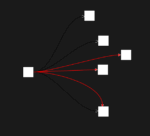In today’s increasingly data-driven landscape, impactful decision-making hinges heavily upon actionable insights delivered clearly and swiftly. Data visualization dashboards, transforming raw information into powerful visual narratives, are central to modern business intelligence. However, as data volumes skyrocket and stakeholder expectations heighten, dashboard performance frequently becomes compromised—leading to sluggish load times or, worse, data inaccuracies. Optimizing performance isn’t merely about technological tweaks; it’s about empowering key stakeholders with analytical agility to drive innovation and strategic gains. By proactively tuning dashboard performance, organizations become nimble, results-oriented, and able to harness sophisticated visual analytics faster, clearer, and smarter—truly converting data into powerful fuel for growth. So, what’s the strategy behind achieving lightning-fast, impactful dashboards that ensure excellent user experiences and rapid decision-making? Let’s dive into the foundational concepts and best practices of performance tuning your data visualization dashboards.
Why Performance Matters in Data Visualization
Performance optimization plays an indispensable role in ensuring your analytics tools aren’t only driven by insights but also user-friendly and efficient. Dashboards with slow load times, suboptimal queries, or inefficient visual renderings quickly lead to frustration and distrust among stakeholders, ultimately undermining their strategic effectiveness. Decision-makers commonly require immediate, actionable insights—not cumbersome wait times. Performance issues can adversely impact productivity, reduce user adoption, and impair critical decision timing, causing potential missed opportunities in innovation and competitive advantage.
On a practical level, rapid dashboard performance elevates the quality and utility of analytics by ensuring the presented information is accurate, timely, and responsive. Stakeholders rely heavily upon speed, clarity, and accuracy in dashboard-driven analytics for daily operations, strategic planning, and future-focus initiatives. In fields like sales forecasting, for example, slow-performing visuals might obscure the insights uncovered through effective historical sales analysis, creating challenges in predicting future demand accurately.
Thus, enhancing dashboard performance is no superficial task; it directly affects business decisions and outcomes. Tuning dashboards effectively is a strategic step, essential for operational clarity and sustained business success.
Understanding Dashboard Performance Issues
Before diving into performance optimization, understanding common performance bottlenecks is crucial. Most issues originate from extensive data queries, inadequate or outdated infrastructure setups, poor data handling, or unoptimized visualizations. These obstacles degrade dashboard responsiveness and sharply reduce usability.
Data-intensive dashboards traditionally execute complex queries that aggregate, filter, and process huge data volumes. Often, slowdowns arise from long-running or inefficient queries due to unindexed databases, overcomplicated joins, or inadequate preprocessing methods. Proper data engineering can preempt these bottlenecks by ensuring data is structured and ready for rapid query operations, significantly enhancing response times and user satisfaction.
Additionally, visually rich dashboards with many charts, real-time visual updates, or interactive elements can strain browser memory or visualization rendering engines. Modern tools like Tableau or Power BI are exceptionally powerful, yet without proper tuning, dashboards that dynamically update can slow down device rendering speed, frustrating users. Understanding the root causes behind these dashboard bottlenecks provides an essential foundation for today’s technical leaders aiming for optimal dashboard effectiveness.
Optimizing Data Queries and Data Handling
Since queries largely define dashboard performance, sophisticated technical management of data retrieval routines dramatically enhances user experience. Data query optimization involves multiple strategies: carefully analyzing cardinality, simplifying joins, optimizing indexing, or creating streamlined virtual tables through techniques like SQL’s CREATE VIEW function. With optimized virtual tables, dashboards efficiently fetch results, reducing load times and freeing computational resources.
Similarly, integrating robust data engineering techniques—including strategic Extraction, Transformation, and Loading (ETL)—can significantly improve dashboard performance. For example, effectively structured ETL processes, as evidenced in these successful ETL implementation case studies, enable specific, pre-processed, and accurate data to populate your dashboards quickly and efficiently.
Data cleaning, aggregation, and partitioning are also crucial aspects of proactive query optimization. Partitioning large tables logically or geographically, for instance, creates smaller chunks of data that queries access and process more swiftly. Appropriately tuning queries prevents data bottlenecks, allowing dashboards to provide real-time insights and enhancing organizational agility.
Selecting Smart Visualizations and Optimizing Design Choices
Visualization selection inherently affects dashboard performance. Thoughtful decisions on visualization types can significantly enhance user experiences, ensuring quick load times and accurate data interpretation. Limit visualizations to only those necessary for conveying insight clearly, reducing rendering complexity to sharpen real-time performance.
Choosing accurate visual scales, carefully tested axes, and data limits help dashboards quickly represent clear insights without distortion. Leveraging recommended visualization principles is critical—accurate representation of data points and proper usage of visual axes, as detailed in our guide on using appropriate scales and axes, ensure stakeholders instantly interpret correct meanings without confusion or misrepresentation.
Additionally, avoid visual overload. While interactivity enhances analytics insights, too many interactive or real-time dynamic visuals significantly impact rendering speeds. Perform thorough dashboard audits, pinpoint unnecessary or redundant visuals, and apply minimalist design principles—emphasize clarity, simplicity, and fast interpretability for stakeholders’ benefit.
Effective Infrastructure & Dashboard Architectural Optimizations
Performance is inherently limited by underlying infrastructure, which encompasses hardware, bandwidth, BI tool configuration, and growing data storage systems. Investing strategically in upgraded technology components, cloud-based solutions, or scalable data platforms directly and consistently improves dashboard speed. Cloud solutions, optimized storage arrays, and strong caching mechanisms reduce response time, offering rapid dashboard load times to meet and exceed everyday demands.
Additionally, focusing architectural optimizations on your BI and reporting platforms means defining best practices for data refreshing, caching, and real-time connectivity. Infrastructure upgrades have broader implications, too—potentially enabling personalization of dashboards, strengthening customer engagement, and ultimately boosting revenue, as explained in our personalization insights analysis.
Strong, intentional infrastructure decisions empower stakeholders, extend the lifetime value of system investments, and significantly elevate analytics capabilities. While infrastructure adjustments often require upfront investment, their long-term returns are substantial—strategically fostering higher productivity and better-informed decision-making.
Establishing a Robust Performance Monitoring and Improvement Feedback Loop
Dashboard performance tuning doesn’t cease post-implementation. Continuously monitoring your dashboards in real business contexts is essential. Establish real-time performance monitoring and diagnostic tools, enabling your team to quickly identify degrading performance areas and deploy proactive interventions. Regular performance reviews paired with user feedback solicited consistently can highlight highly impactful improvements necessary for end-users—the individuals directly experiencing dashboard effects day-to-day.
Systematic dashboard tune-ups, akin to familiar software updates such as those detailed for Canopy’s Update 0.1.1, ensure optimal performance, reliability, and stability. Coupling system monitoring with regular dashboard user-training sessions via widely adopted solutions like Python’s Anaconda3, helps teams enhance analytical skill sets rapidly. Seamless feedback loops jointly empower teams, consistently improving dashboards and maximizing strategic data insights.
By establishing long-term, iterative improvement methods, stakeholders feel confident embracing powerful analytical dashboards not just as mere data viewers but sophisticated problem-solving and decision-driving interfaces. Adopting thoughtful feedback loops creates lasting organizational resilience and promotes constant, iterative enhancement that underpins innovation and continuous progress.
Conclusion: Taking Dashboard Performance Optimization Seriously
Optimized dashboards significantly empower organizations, enabling data-driven decisions at operational speed. As critical catalysts for innovation, agile dashboards accelerate organizational response and adaptability, paving the pathway toward robust competitive differentiators. By strategically addressing dashboard performance through enhanced query optimization, impactful visual selection, infrastructure improvements, and diligent monitoring, organizations streamline access to intelligent insights, achieving rapid, accurate, and future-ready analytics.
The commitment to ongoing performance optimization demonstrates technical stewardship. Boldly prioritizing dashboard performance fosters organizational efficiency, engages stakeholders actively, and ensures detailed analytical insights reliably reach key decision-makers when they need them most. Embrace performance optimization today and unlock powerful analytical success that directly translates clarity into innovative leaps forward.
Tags: Dashboard Performance Tuning, Data Visualization, Dashboard Optimization, Data Engineering, Analytics Infrastructure, Strategic Data Solutions

























